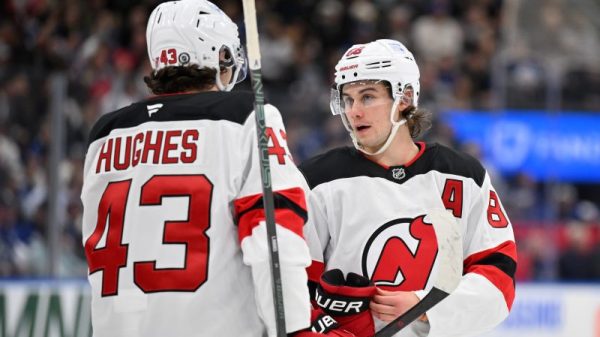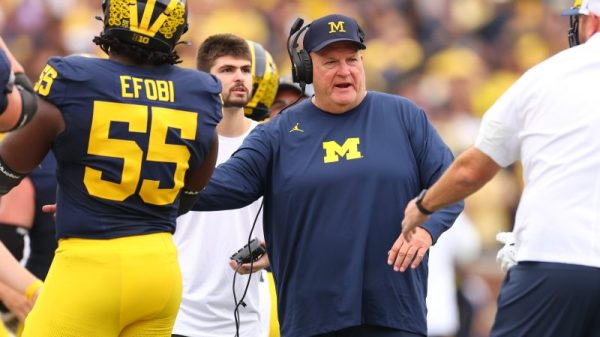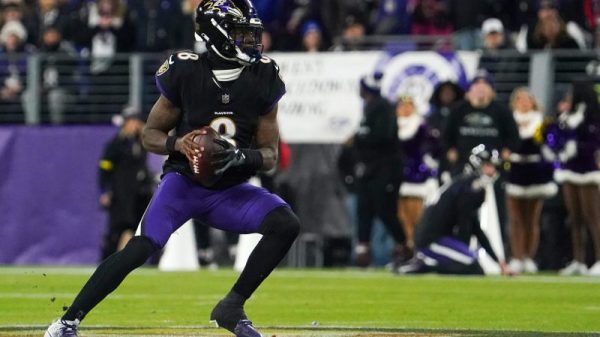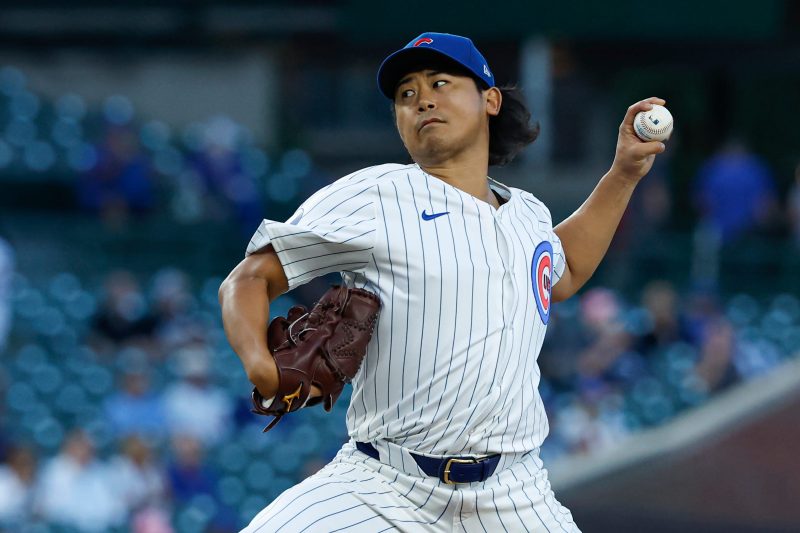When Shota Imanaga’s no-hit bid for the Chicago Cubs was unfolding the other night, a number of baseball’s “unwritten rules” were at play.
Imanaga’s teammates avoided contact with him in the dugout, a long-held player superstition during potential no-hitters. No one on the Pittsburgh Pirates, the Cubs’ opponent, attempted to bunt for a hit, which would have drawn criticism as trying to break it up in a cheap way.
Cubs manager Craig Counsell went head-on with one of these so-called rules when he pulled Imanaga after seven innings with the no-hitter still intact. Counsell said he was prioritizing his pitcher’s health.
“It’s 100% about taking care of Shota and making sure we’re doing the right thing for him,” the manager said.
Are we doing the same for our kids with their sports?
Parents and coaches often have their own unwritten rules: Don’t run up the score on a weaker opponent; don’t cheer when that opponent makes a mistake; don’t steal bases when you have a big lead; don’t leave a kid pitcher in a game after he’s thrown 95 pitches, as Imanaga had.
And yet, it all happens anyway.
Our rules, if they aren’t written down or widely understood, can lead to arguments and confrontations among coaches, or even fights among parents in the stands.
As a result, our kids see poor representations of “adult” behavior. Their own sportsmanship, development and health is compromised because we don’t have enough of a bold-faced code.
Here are 10 unwritten rules to live by in youth sports, developed in consultation with coaches across the country and a medical expert. Some of them have been adopted into the bylaws of sports leagues and tournaments. Others, like Counsell’s words, are just common sense.
1. Know how much your kid has pitched (or played)
We know from record keeping at the professional level that Imanaga, who pitched eight years in Japan before coming to the Cubs this season, is approaching a career high in innings this season.
Youth pitch counts are less precise. Kids sometimes pitch for multiple teams in the same season, and their number of pitches is tracked independently.
Therefore, a kid could reach his or her pitch limit for Little League (85 or less from ages 12 on down) and then pitch in a tournament without the required four days of rest. Some tournaments allow kids to pitch on consecutive days with more relaxed rest rules than what Little League requires, or even to pitch without limitations.
“And if it’s an important game, I would argue that adrenaline may cause that athlete to throw harder than he or she normally would,” Natalie Ronshaugen, a pediatric sports medicine physician at Children’s Nebraska in Omaha, Nebraska, told USA TODAY Sports.
Pitches thrown should count toward tournaments and Little League tallies to limit the risk of a growth plate injury, which Ronshauge says can shut down a kid for an entire season. More severe injures can affect growth of that limb.
At any age, it’s important for coaches to communicate with athletes about not only their pitch counts, but how they feel. Throwing can sometimes cause sore muscles, but should never cause pain, Ronsaugen says.
“A fatigued pitcher is much more likely to have poor throwing mechanics and is at a higher risk of injury,” she says.
That goes for athletes in other positions and sports, too. Don’t get so caught up in winning a game, or in completing a no-hitter, that you compromise a kid’s health.
Coach Steve: The ‘dangerous’ effects of playing through a concussion
2. The 24-hour rule: No postgame analysis on the way home
If your son or daughter has just had a rough game, they are likely more upset about it than you are.
“Do not do a postgame analysis on the way home,” Baseball Hall of Famer and youth sports advocate Cal Ripken said last spring at the Project Play Summit. “When something goes bad, do not address (in the car). That’s going to end bad every single time. They’re not gonna listen; you’re gonna get upset. Just figure out what you might want to say the next day, and then try to impart that teaching.”
Wait 24 hours, and then suggest something they did well to mix in as part of your discussion, as Ripken’s father once did with minor league ballplayers.
“I couldn’t be more proud of your effort,” you might say. “We just need to work on your swing a little more. It will come.”
Or allow your child to initiate the conversation, and let the discussion flow from there. This gives him or her a feeling of power or control over the situation.
3. Parents, don’t instruct kids during games
‘Leave the players alone! The amount of times that parents shout incorrect tactical advice to their child is way too high,” says Bryan Wokich, a U7 and U11 soccer coach from Bellingham, Washington. “Amazingly, it’s tougher with the young ones. I’m trying to get a player to stay on defense and parents are encouraging the kid to chase the ball.”
He echoes the frustrations of youth coaches across the country.
We think we are helping, but we’re just distracting them. We’re also teaching them from an early age to be overly dependent on us when we should be starting to foster independence.
Let them make decisions, and let the coach offer the instructions.
“I should emphasize that all the parents are trying to help and cheering on their kids in good spirits,” Wokich told me. “Some coaches go as far as ‘please don’t say your child’s name.”
Instead, stick to encouraging phrases: You’ve got this! Get the next one. Or, you’re good! Here are more suggestions.
4. Another 24-hour rule: if you disagree with a coach’s decision, cool off first
We don’t always like what coaches tell our kids. But parents can come off too harsh in the heat of the moment. It’s better to address your issues with a clear mind.
Implement your own 24-hour rule.
Kyle Reed uses that policy as the head varsity football coach at Monroe (Mich.) High.
“I also explain to the parents I’m gonna hold them accountable, just like you will, so let me be a conduit to help do that,” says Reed, who has been coaching high school football for 24 years. “I think people do appreciate that perspective.”
5. ‘Blah, blah, blah’: No parent critiques of umpires
Sports officials often bear the brunt of our disappointment when things don’t go our kids’ way. Parents berate, threaten, and demonize them. In turn, the officials quit because they fear for their safety, and there are fewer at games to get the calls right.
Have you ever had a personal conversation with an umpire or referee? They are often someone’s teenager like yours or seasoned veterans who are knowledgeable about their sport.
If you cheer and otherwise sit quietly, they might offer your son or daughter an inside tip. But if you yell at them, they shut down, if they are even listening to you at all.
“Parents don’t realize the helmet muffles the sound of mostly all of their screaming,” says Steve Buskard, who has refereed youth hockey for more than 16 seasons in Ontario, Canada. “We only hear ‘Blah, blah, ref, blah.’ The players at a face off will always apologize to us for their parents.”
6. Coaches, set an example when disputing calls
“Kids watch you more than they’ll ever listen to you,” says Torrey Smith, a former Super Bowl-winning receiver who now shares his core values with inner city kids in Baltimore.
Instead of exploding at sports officials’ calls, coaches can use a call with which they disagree as an opportunity. It can show kids how to handle a dispute, even if he gets tossed.
“When a coach is ejected from a game by an umpire after losing an argument, there is an immediate learning opportunity and experience for the players; they will closely observe how the coach handles the situation,” says Evan Gerish, a youth coach from metro Detroit. “Does the coach maintain composure, or do they lose their temper? Do they swear? It’s a major moment to watch a role model in a real life situation.”
7. Have playing time rules at tournaments
There is no excuse for not playing every kid as much as you can when their parents are shelling out thousands of dollars per season to play for your team.
Tournaments (starting at young age groups) don’t always have minimum playing time rules, let alone equal playing time rules. Instead, it’s all about winning. I’ve seen kids in multiple sports played minimally or not at all. A parent and longtime youth hockey coach with whom I connected in Michigan told me he has seen it, too, in volleyball and hockey, sports with notoriously high fees.
He suggested two easy fixes:
If a kid isn’t going to play much on a team, the coach needs to suggest to the parents to move a level down.
If you’re going to a road tournament, let them know the kid won’t play ahead of time.
Coach Steve: Winning doesn’t rank high on kids’ list of fun factors. Just ask Andre Agassi
8. Bush league: Don’t use tactics that won’t work at the next level
Baseball tournaments often don’t restrict stealing bases when a team has a big lead. Some coaches do it, though, when it allows them to reach their mercy rule threshold quicker and rest their players for the next team. This tactic can lead to confrontations with an angry opposing coach.
If you’re regularly dominating teams in a youth tournament, it means you needs to move up a skill level of competition, where you might get humbled yourself.
On smaller baseball fields, we see players steal bases in between throws from the catcher to pitcher. They can get away with it in Little League, but on a regulation sized field, where kids are ultimately judged, they’d likely get thrown out by 20 or 30 feet.
9. Use one-sided games as an opportunity to get better
I have experienced both sides of blowouts as a coach. In one sixth-grade basketball league, we weren’t allowed to win by more than 40 points, so once teams reached that threshold, they played keep-away from the other players. It wasn’t basketball.
A varsity lacrosse coach in Atlanta with whom I connected on social media has a better solution: Divide up the rosters into evenly matched teams and play an intrasquad for the second half. It teaches players respect for the game and for their opponents.
And don’t count individual stats once a certain lead is reached, a 16U hockey coach in the New York metro area suggests. Don’t make blowouts about padding stats for an All-Star selection. Make them about sportsmanship.
10. Don’t forget there’s kids – and humans – on the other side
We get so engrossed in the results of our kids’ games, that we momentarily forget there are kids on the other side, too. We cheer fervently for ours, even when our opponent makes a mistake. (I have been guilty of this unintended jeering, too.)
The next time it happens, let’s sit quietly and watch the kid who has made the error, or thrown the ball out of bounds or to the opposing defensive back. Let’s think about how he or she might feel.
And then let’s think about if we would be hard on ourselves, or our kid, if the same thing happened to us. It’s a practice a coach at the highest level of men’s college basketball embraces.
“I’m a human being. This guy I’m coaching is a human being. And we have to have a level of acceptance for some of the flaws and the frailties and limitations that people have,” Marquette coach Shaka Smart says.
During a recent interview on the Coaching Culture podcast, Smart recounted how he recently woke up at 2 a.m. and said out loud: “Not good enough. It’s OK.”
“Then I thought about it. It’s kind of like the story of a lot of our lives,” Smart said. “We’re trying to be better, we’re trying to grow, we’re trying to help others do the same. But at the same time, we have to get to a place of acceptance, like, it’s OK.”
In other words: Whatever the rules, written or unwritten, we win and we lose, we make mistakes, but we can always do things differently the next time.
Steve Borelli, aka Coach Steve, has been an editor and writer with USA TODAY since 1999. He spent 10 years coaching his two sons’ baseball and basketball teams. He and his wife, Colleen, are now sports parents for two high schoolers. His column is posted weekly. For his past columns, click here.



























